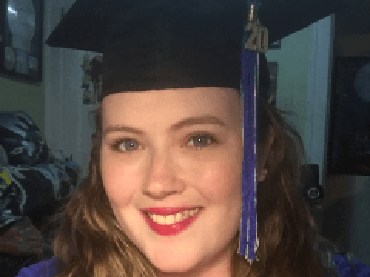Rachel Mabb had experienced health issues early in life, from juvenile rheumatoid arthritis as a child to the breakdown of a middle ear bone in high school. But it was 2014 when what she believed to be merely a minor condition suddenly turned serious.
“I had what I thought was a sinus condition or bronchitis,” Rachel explains. “I ended up having nodules on my lungs.”
The Diagnosis
Doctors at UPMC Altoona suspected that Rachel might have a disease known as granulomatosis with polyangiitis (GPA), which can cause blood vessel inflammation in the nose, lungs, and throat. To confirm this diagnosis, they performed a biopsy of Rachel’s sinuses, and she was then sent to Pittsburgh for continued treatment at UPMC Presbyterian.
Rachel was released after a few months, but the GPA eventually spread and closed her upper airway, prompting a return to the hospital.
During this visit, doctors made an incision in Rachel’s neck and inserted a tube into her windpipe so air could enter her lungs, all part of a procedure commonly referred to as a tracheostomy. Weakened blood vessels caused by GPA prevented the use of a stent to open Rachel’s airway. So, doctors used bronchoscopic balloons to perform weekly dilations.
“It was once a week, and then every two weeks,” Rachel recalls. “Then, it luckily stretched to once a month, once every three months, once every six.”
After Rachel’s condition improved, doctors at UPMC Mercy administered multiple steroids and used lasers and balloons to open and stabilize her airway. This entire outpatient process took two years until the tracheostomy tube was finally removed in 2019.
Rachel’s Path Forward
Rachel estimates that she has had about 15 surgeries at three UPMC hospitals, but through it all, she’s been able to count on the support of Dr. Daniel Kass, a pulmonologist at the the UPMC Comprehensive Lung Center. and director of the Dorothy P. and Richard P. Simmons Center for Interstitial Lung Disease at UPMC..
“He’s super nice. I look forward to seeing him,” Rachel explains. “He’s always looked out for me, always remembered different tidbits and would ask about my family.”
The rest of Rachel’s care team also left a lasting impression, including nurses and other staff. She says it felt good to be recognized by people who knew how to provide comfort, from words of encouragement when a particular drug didn’t work, to someone to talk to when she would wake up scared, to the nurse at UPMC Presbyterian who would bring her weekly television listings from the newspaper.
Rachel believes it’s important to look beyond the medical needs of a patient and support them psychologically as well. She adds that even small gestures can create unforgettable memories after months in a hospital room.
“One nurse took me outside. Outside! Do you know how amazing that is? She was sweating, but she let me hang out for a while. To get to see the sun…that was one of the best days I had.”
When not in the hospital, Rachel thinks the most challenging part of being sick was the boredom of being home with limited human interaction. She previously worked 40 hours a week at a restaurant but had to significantly reduce the number of hours she worked due to fatigue. Getting clearance to return to work after completing pulmonary rehabilitation was a memorable moment.
“When I got to put back on my uniform and get out of my house, that was huge for me. I didn’t like just sitting at home. I love reading, but there were no people.”
In addition to working in the restaurant, Rachel decided to go back to school, taking classes online. She received a bachelor’s degree and is now pursuing a master’s degree in library and information sciences, with hopes of working in a library, which is “what she loves.”
Rachel’s treatment and results may not be representative of all similar cases.

















